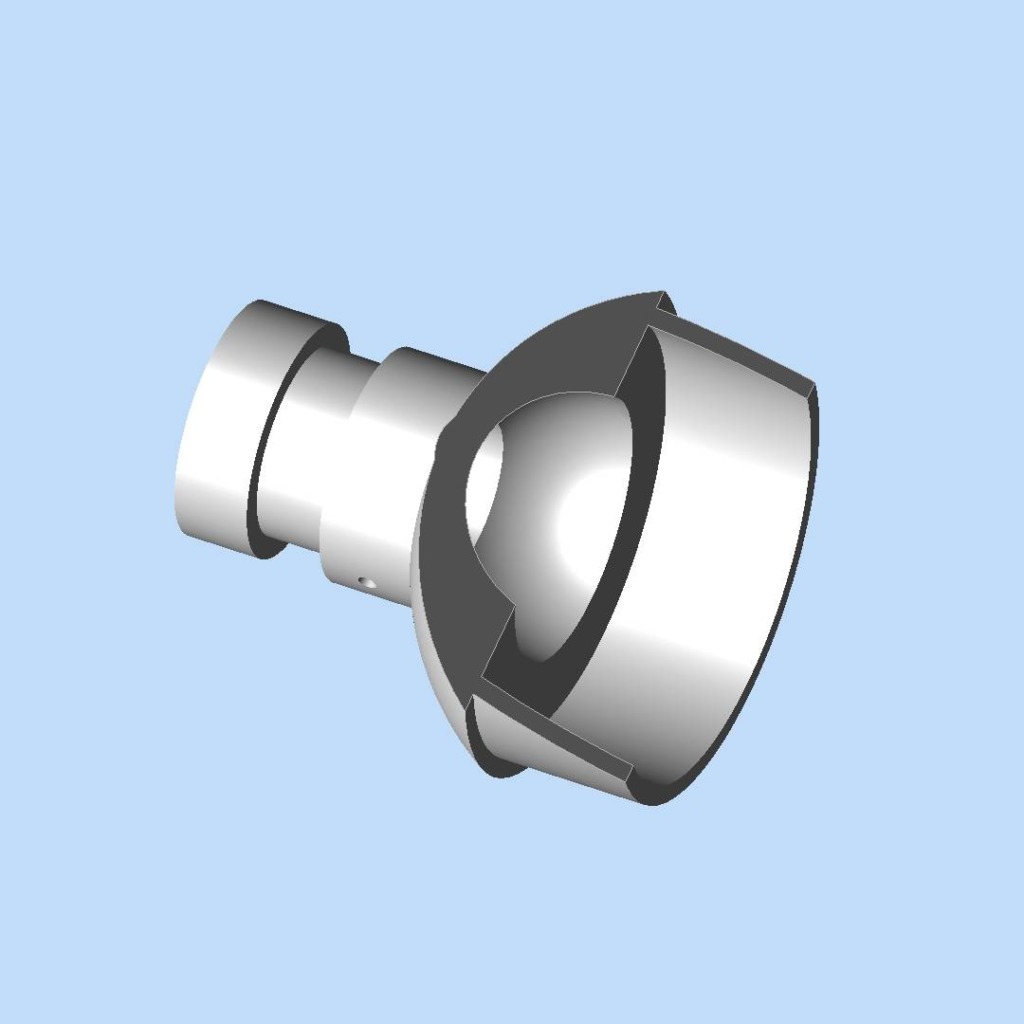Continuing from the previous discussion on “Titanium and the Front Casing,” this time we will talk about “How to compensate for the weaknesses of Titanium.”
If you haven’t seen the previous post yet, please take a look at it first.
The content for this time is as follows:
- How to compensate for the weaknesses of Titanium?
- Suppressing vibrations of the D-type driver (Part 1)
- Suppressing vibrations of the D-type driver (Part 2)
1) How to compensate for the weaknesses of Titanium?
The drawbacks of using Titanium in the front casing can be summarized as follows:
・It is not well-suited for suppressing vibrations of the D-type driver.
・It is not optimal for reproducing low-frequency sounds due to vibration suppression.
・It is costly.
・It is difficult to process.
As discussed previously, to overcome these weaknesses and achieve optimal sound quality in the earphones, we need to address two specific issues related to the sound engineering aspect. These are:
- Unsuitability for suppressing vibrations of the D-type driver.
- Incompatibility with reproducing low-frequency sounds due to vibration suppression.
To achieve the best possible earphones, it is necessary to find solutions and compensations for these weaknesses through various means.
2) Suppressing vibrations of the D-type driver (Part 1)
First, to suppress vibrations of the D-type driver, 634EARS employs a method of “applying tension and pressure” to secure the driver.
By using this method, the vibrations of the D-type driver can be significantly reduced. As a result, it enables the production of a solid and well-defined sound with no distortion or loss.
For more details on this, please refer to the following blog article. There, we provide a detailed explanation of this method.
It would be even more comprehensible to take a look at the following three articles together.
・Vibration of dynamic drivers (Part 3)
・Vibration of dynamic drivers (Part 2)
・Vibration of dynamic drivers (Part 1)
3) Suppressing vibrations of the D-type driver (Part 2)
By utilizing the “method of applying tension and pressure to secure the driver” mentioned earlier, we were able to significantly suppress vibrations. However, it is still not sufficient with materials that are not well-suited for vibration suppression, such as Titanium.
Especially with materials like Titanium or Aluminum that efficiently transmit vibrations without loss, it is important to effectively suppress vibrations while still reproducing low frequencies accurately.
Therefore, I conducted various trial and error experiments and found one effective approach. It involves using stainless steel only in the mounting area of the driver.
Unlike Titanium or Aluminum, stainless steel has excellent vibration damping properties. As a result, it often produces solid low-frequency output.
Leveraging this advantage, I construct the casing base with Titanium and use stainless steel only in the area where the driver is mounted. This allows for a firm suppression of driver vibrations, while the resulting sound (vibration) is minimally attenuated by the low internal loss of Titanium, enabling rapid transmission.
To provide a more concrete visualization, as shown in the diagram below, stainless steel is utilized on the surface (highlighted in light blue) and sides (highlighted in green) where the driver is mounted.


ドライバ―取付前面(Blue)とドライバ―取付側面(Green)
にステンレスを使います。
In actual tests, I have achieved favorable results by combining the powerful low-frequency characteristics of stainless steel with the beautiful tonality and high-range capabilities of Titanium.
Although it is still unclear whether I will adopt this approach as it is, I plan to further proceed with testing. Our goal is to combine the “method of applying tension and pressure to secure the driver” with the “use of stainless steel only in the driver mounting area.” This combination aims to compensate for the weaknesses of Titanium.
The approach we are taking is to primarily use Titanium, which excels in acoustic properties, as the base material. However, I will selectively incorporate stainless steel, which has excellent vibration-damping properties, in the areas where vibration suppression is necessary. By combining the benefits of both materials, our aim is to compensate for the weaknesses and achieve superior sound quality.
In the next continuation, I would like to delve a little deeper into the difficulties of processing Titanium and its high cost. Specifically, I would like to explore whether 3D printing or machining is more suitable for Titanium and discuss their respective advantages and disadvantages.

